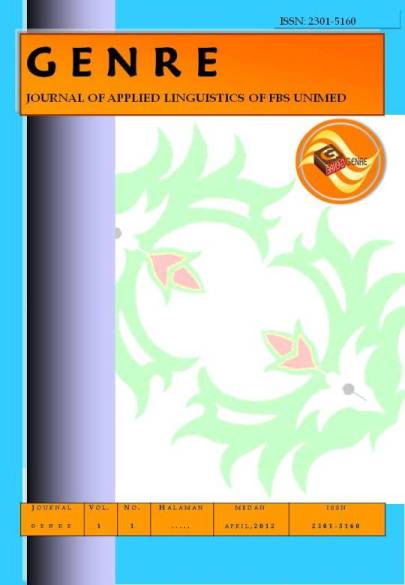IMPROVING STUDENTS™ READING COMPREHENSION THROUGH DIRECTED READING THINKING ACTIVITY
DOI:
https://doi.org/10.24114/genre.v1i1.360Abstract
ABSTRACT This thesis focuses on the process of improving students™ reading comprehension through Directed Reading Thinking Activity. The objective was to discover the significant improvement of students™ reading comprehension if the students were taught by using Directed Reading Thinking Activity. The subjects of the study were Grade XI- IA 1 students State Senior High School ( Sekolah Menengah Atas Negeri: SMAN 2 Kisaran). There were thirty four students, consisting of eighteen girls and sixteen boys. They were taught with Directed Reading Thinking Activity. The instruments for data collection were reading assessment, diary notes, interview and observation. The techniques of data analysis applied were quantitative and qualitative. In analyzing the data, the students were given three reading assesments namely, Assessment I, Assessment II, and Assessment III. The mean of the students™ score for the first reading assessment as Assessment I was 50.09, the second reading assessment to the third was 69.68%, and the third reading assessment as Assessment III was 80. 32. The total percentage of the improvement from the first reading assessment to the third was 75.53%. The conclusion is that the application of Directed Reading Thinking Activity can improve students™ reading comprehension. The qualitative data shows that the students were enthusiastic and interested in reading comprehension. It is suggested that teachers should apply Directed Reading Thinking Activity as one of the strategies in improving students™ reading comprehension. Key Words: Reading Comprehension, Directed Reading Thinking Activity (DRTA)Downloads
Published
2012-04-01
Issue
Section
Articles
License
Copyright (c) 2012 Ismayani Ismayani, Meisuri Meisuri

This work is licensed under a Creative Commons Attribution-ShareAlike 4.0 International License.
Authors who publish with this journal agree with the following terms:
- Authors retain copyright and grant the journal right of first publication with the work simultaneously licensed under a Creative Commons Attribution License that allows others to share the work with an acknowledgment of the work's authorship and initial publication in this journal.
- Authors are able to enter into separate, additional contractual arrangements for the non-exclusive distribution of the journal's published version of the work (e.g., post it to an institutional repository or publish it in a book), with an acknowledgment of its initial publication in this journal.
- Authors are permitted and encouraged to post their work online (e.g., in institutional repositories or on their website) prior to and during the submission process, as it can lead to productive exchanges, as well as earlier and greater citation of published work (See The Effect of Open Access).
- This work is licensed under a Creative Commons Attribution-ShareAlike 4.0 International License.

